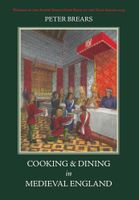Advertisement
Frying
Appears in
By Peter Brears
Published 2008
One of the great advantages of frying is its relative speed. For working people, shallow-fried eggs and bacon, pancakes and similar foods produced virtually instant, satisfying meals, with little expenditure of time and fuel. In great households, meanwhile, more time could be spent in the preparation of batters, pastries and fritters which could be rapidly fried off and served crisp and hot at the appropriate stage of a meal. The frying media were either white grease, which we now know as lard, or olive oil. They were used in two distinct ways. For shallow frying – of pancakes, bacon or omelettes for example – the main function of the grease or oil was as much to prevent the foods from sticking to the pan as to cook them. Froyse, a spiced mixture of chopped, cooked beef and beaten eggs, provides a good example of a shallow-frying technique:

